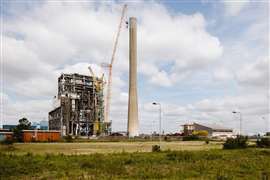Read this article in Français Deutsch Italiano Português Español
How Trump’s proposed budget cuts could impact construction
06 May 2025
President Trump has proposed a budget that would cut non-defence discretionary spending by US$163 billion for fiscal year 2026, which runs from October 1, 2025, through September 30, 2026, and would impact the construction and infrastructure sectors.
 The proposed budget includes cuts to the Infrastructure Investment and Jobs Act (IIJA) funding. Image: Adobe Stock
The proposed budget includes cuts to the Infrastructure Investment and Jobs Act (IIJA) funding. Image: Adobe Stock
The spending reductions include a $43.5 billion cut – about 44% – for the US Department of Housing and Urban Development (HUD). This includes dropping the $1.25 billion Home Investment Partnerships Program, which provides grants to states and local governments and low-interest loans to developers to expand the supply of affordable housing.
It also proposes a cut of $19.3 billion from the Department of Energy’s (DOE) budget by making reductions to the Infrastructure Investment and Jobs Act (IIJA) funding and the Office of Energy Efficiency and Renewable Energy.
The budget proposal cuts around $15.2 billion of DOE’s IIJA funding – including a program that would install EV chargers on highways – $2.6 billion from its Office of Energy Efficiency and Renewable Energy, $1.1 billion from its Office of Science, and $389 million from the Office of Environmental Management.
President Trump’s FY2026 budget proposal also amounts to $4.2 billion in total funding reduction across the Environmental Protection Agency (EPA) agency in 2026 compared to 2025.
Talking specifically about the FY2026 budget proposal released by the White House to drastically cut two EPA state revolving funds (SRF) used for repairing water infrastructure National Utility Contractors Association (NUCA) Vice President of Government Affairs Zack Perconti, said, “The White House’s FY2026 budget proposal to zero out the nation’s primary resources for building clean water and sewer systems misses the point: Without these SRF funds, other state and federal programs such as WIFIA will not have the resources to repair our nation’s deficient water infrastructure systems.”
He added that, “IIJA was a great first step in fixing the nation’s infrastructure. But since its passage too many in Washington have used the 2021 law as an excuse for pinching pennies. Last year, Congress at the last minute had to restore the SRFs to their FY2024 levels, around $3 billion, after House appropriators failed to understand the vital part they play in maintaining our nation’s water and wastewater systems.”
The budget is only proposed – the US Congress will now go through the proposed budget and make recommendations.
STAY CONNECTED


Receive the information you need when you need it through our world-leading magazines, newsletters and daily briefings.
CONNECT WITH THE TEAM











